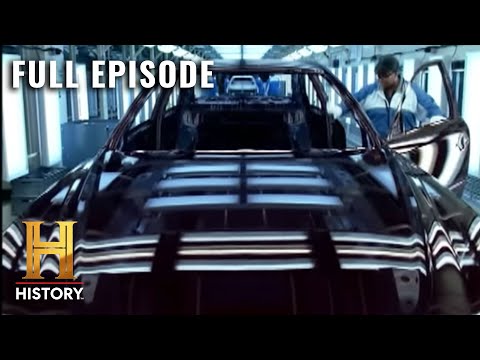Introduction
In today’s fast-paced world, mass production has become an integral part of our lives. It is the reason we get the goods and services that we need at an affordable price. In short, the assembly line has revolutionized manufacturing, speeding up the entire process.
This article takes a closer look at the history of the assembly line. We’ll trace its evolution from humble beginnings to present-day dominance over previous methods.
The Origins of the Assembly Line: A Brief History
Before we start, it’s worth noting that the assembly-line basis has been used for centuries. This concept of production has been used to create everything from furniture to clothing.
The assembly line concept you are most familiar with, however, dates back to the 18th century. The Industrial Revolution was the key turning point. It appeared with the development of machine tools and the division of labor. We saw individual workers begin to specialize in specific tasks and complete them in a sequential fashion.
Early examples of industrial assembly lines can be found in the production of muskets, where each worker would focus on a single process. The growth of the textile industry during the Industrial Revolution also utilized stationary assembly and simple assembly processes, further laying the groundwork for the modern assembly line. As technological innovations continued to advance, the potential for assembly lines to transform manufacturing became increasingly evident.
Also Read: Robotics and manufacturing.
The Birth of Mass Production
The modern assembly line was popularized by the Ford Motor Company and its founder, Henry Ford. In 1913, Ford introduced the electric-powered conveyor belt to the automotive industry at their Highland Park plant. It revolutionized the manufacturing process forever. The Highland Park plant innovation basically introduced mass production. The assembly line completed cars that would take 12 hours to build with traditional methods in only 90 minutes.
Mind you; Ford wasn’t the first to try out the actual assembly line. Ransom Olds was an American engineer who created and patented a similar concept in 1902. But it was Ford’s vision that truly revolutionized the automotive industry, creating a much more efficient process for producing automobiles.
Stationary workers could now perform their specialized tasks more efficiently and with greater precision. The conveyor belt system helped decrease assembly time and labor hours significantly. That led to a substantial reduction in costs. In turn, the Ford Motor Company began to sell automobiles at a more affordable price, making them accessible to the growing middle class.
Impact of the Assembly Line on Manufacturing Processes
The implementation is often credited with the transformation of manufacturing processes. By breaking down complex tasks into smaller, specialized tasks, manufacturers could efficiently assemble products with a higher degree of consistency. That led to a significant reduction in production time and costs, which made products more affordable for consumers.
It also had a profound effect on American industry as a whole. The success of Ford’s assembly line inspired other industries to adopt similar assembly methods. Ultimately, it led to the widespread adoption of industrial assembly lines across various sectors.
The adaptability of the assembly line allowed it to be used in the production of everything from electronics to food products. After a few years, it propelled the growth of modern advances in manufacturing.




